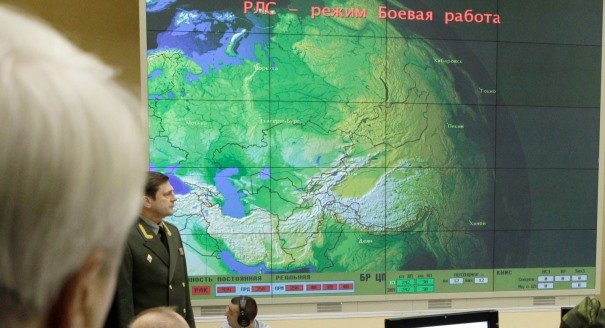Registration
You will receive an email confirming your registration.
Cooperation between the United Starts and Russia on ballistic missile defense (BMD) remains unlikely. Richard Weitz, senior fellow and director of the Center for Political-Military Analysis at the Hudson Institute, spoke about the low potential for cooperation during the event at the Carnegie Moscow Center. Carnegie Moscow Center’s Natalia Bubnova moderated.
Reasons for Pessimism
Weitz explained why, in his opinion, cooperation between the United States and Russia on BMD is not very likely:
- U.S. Intransigence: The United States, and in particular its navy commandment, will not agree on any legal limitations, which have been requested by Russia, for its BMD elements, Weitz said.
- Russia Lagging Behind in BMD Technologies: The United States stands to gain little from working with Russia on joint BMD development, since Russia is far behind the United States in BMD-related technologies, Weitz said. He added that the fact that the Gabala radar station in Azerbaijan is no longer being leased by Russia contributes to the lack of U.S. interest in BMD cooperation with Russia.
- A Potential Political Solution: Weitz suggested that it would have been possible for Putin to declare a “victory” on this issue, following Obama’s decision to abandon deployment of BMD interceptors in Poland. Such a “resolution” of the BMD issue would have allowed the United States and Russia to move on to what Weitz called “more significant issues.”
BMD in Europe
- European Deployment: U.S. BMD interceptors in Europe do not have the capability to overtake Russian strategic missiles and do not pose a threat to Russia, Weitz explained. He argued that interceptors currently deployed in Alaska or in California, the number of which may be further increased, might have greater capabilities than those based in Europe to hit Russian ballistic missiles.
- A Perception of Threat: Even if the U.S. interceptor missiles cannot knock down Russian ballistic missiles, moving U.S. defense structures to Russia’s borders inevitably makes Russia feel threatened, a discussant pointed out. Participants suggested that the United States would have felt similarly threatened if Russia had decided to place its interceptors close to U.S. borders, for example in Cuba.
Strategic Balance
Both Democrats and Republicans in the United States are interested in mutual bilateral reductions of strategic offensive weapons, participants added. Yet strategic defense systems, together with strategic offensive weapons, contribute to the overall strategic balance of forces between the United States and Russia. Both strategic offensive forces and strategic defenses are thus part of the equation when lowering strategic nuclear ceilings.
China
China, which previously had not expressed concern over the U.S. BMD plans, is now increasingly worried over the U.S. BMD deployments in Asia-Pacific, discussants pointed out. The ongoing U.S. BMD developments diminish the prospects of drawing China into negotiations on nuclear weapons limitations. Participants pointed out that Russia, in particular, has argued that negotiations on such nuclear limitations should include not only the two leading nuclear powers, but other countries as well.
